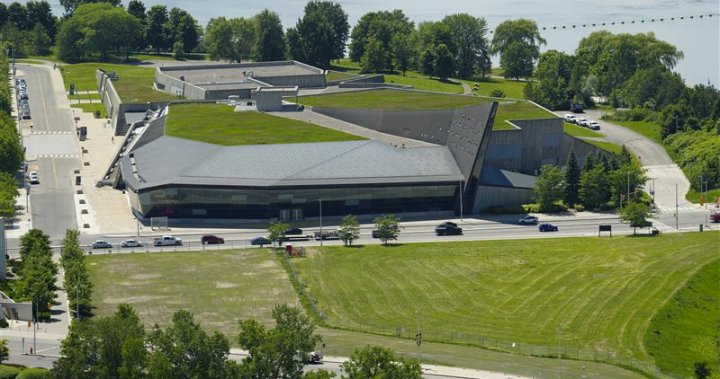A new online exhibit at the Canadian War Museum is opening a window into veterans’ postwar lives.
“In Their Own Voices” is an online collection which showcases 200 interviews with veterans and their families, sharing their innermost thoughts and life experiences after military service that many veterans kept to themselves and never had the opportunity to share publicly.
“I was happy the war ended. I was very sad, and I cried, and I cried and I cried for the boys who gave their lives,” said Second World War veteran George Morasch in one clip.
Tyler Wentzell, a Canadian Army member who served in Afghanistan in 2008, explained in an online clip how he felt as Kabul fell in 2021, saying, “The speed with which the Afghan state collapsed was really disheartening because, as it was happening, I was getting messages from people that I still knew who were in Afghanistan.”
He said this was just a bad news story for many Canadians, but for him, it was more personal.
“We were getting messages from people we really care about, like all day every day for weeks, so that was very unpleasant,” Wentzell said.
Historian Michael Petrou explains that this collection is unique in exploring veterans’ lives after returning from war. While most battlefield reports and newspaper articles end when the soldiers return home from the conflict, “In Their Own Voices” explores how their wartime experiences continue to shape their lives long after the guns fell silent.

Get daily National news
Get the day’s top news, political, economic, and current affairs headlines, delivered to your inbox once a day.
“For the people that are involved in those missions or involved in those conflicts, the impacts continue to ripple for years and sometimes generations after that,” Petrou said.
In one of the online clips, Afghanistan war veteran Benjamin Hertwig shared a powerful and emotional experience he had with his grandfather, a Second World War veteran, shortly after his returning from his deployment.
He described how he found himself at a large family gathering, one he hadn’t felt prepared to attend. During the event someone mentioned a member of his platoon who had died, sparking an intense wave of grief.
“I remember kind of choking up and starting to cry, and not … being able to stop, and kind of trying to get away from people and just still not being able to stop the tears,” Hertwig said.
“And my grandfather stopped me … in the hallway and he was … the life of the party. He was always chatting and joking and … (this time) he was very serious, which was uncharacteristic for him. And he just kind of touched me on the shoulder. And said, ‘I know, I understand.’”
Despite having served in different wars, these two veterans, from two different generations, were able to share their common grief for their comrades in a way that bonded them closer together — a common theme throughout the exhibition.
But every veteran had a different way of dealing with their traumatic experiences. Jonathon Reid shares how the return of his father, John Reid, a Second World War veteran who spent four years as a prisoner of war under Japanese forces, had a profound impact on his family.
“In those days, you have to remember, PTSD was not understood, wasn’t even named. Men were supposed to come back… from their service and just fade back into civilian life,” Reid said. “But clearly there was scarring, there was damage done and that damage had its own effect.”
Reid’s story is one of many that shed light on the lasting consequences of war.
“You find solace in the fact that the sacrifice matters because we need people who are willing to sacrifice for Canada,” shared Wentzell in his exhibit interview.
The online exhibit presents veterans’ and families’ stories through photos and videos, exploring themes like transitioning to civilian life and the emotional impact of service.
Wentzell says he hasn’t fully transitioned to civilian life. Currently serving as the commanding officer of the 48th Highlanders of Canada, remaining a part of the Canadian military was a key step in his return to civilian life.
Staying connected with other veterans, he says, has been invaluable, especially during challenging times like the fall of Kabul. “It was nice to be around those people who had similar experiences serving in Afghanistan,” he shared.
The online exhibit offers a platform for veterans, families and the public to engage with these stories and deepen their understanding of military service.
“I hope Canadians who didn’t serve might recognize their loved ones and even if they don’t, might be able to understand perhaps a little bit better how conflict in military service has shaped other veterans,” said Petrou.
© 2024 Global News, a division of Corus Entertainment Inc.
Read the full article here
